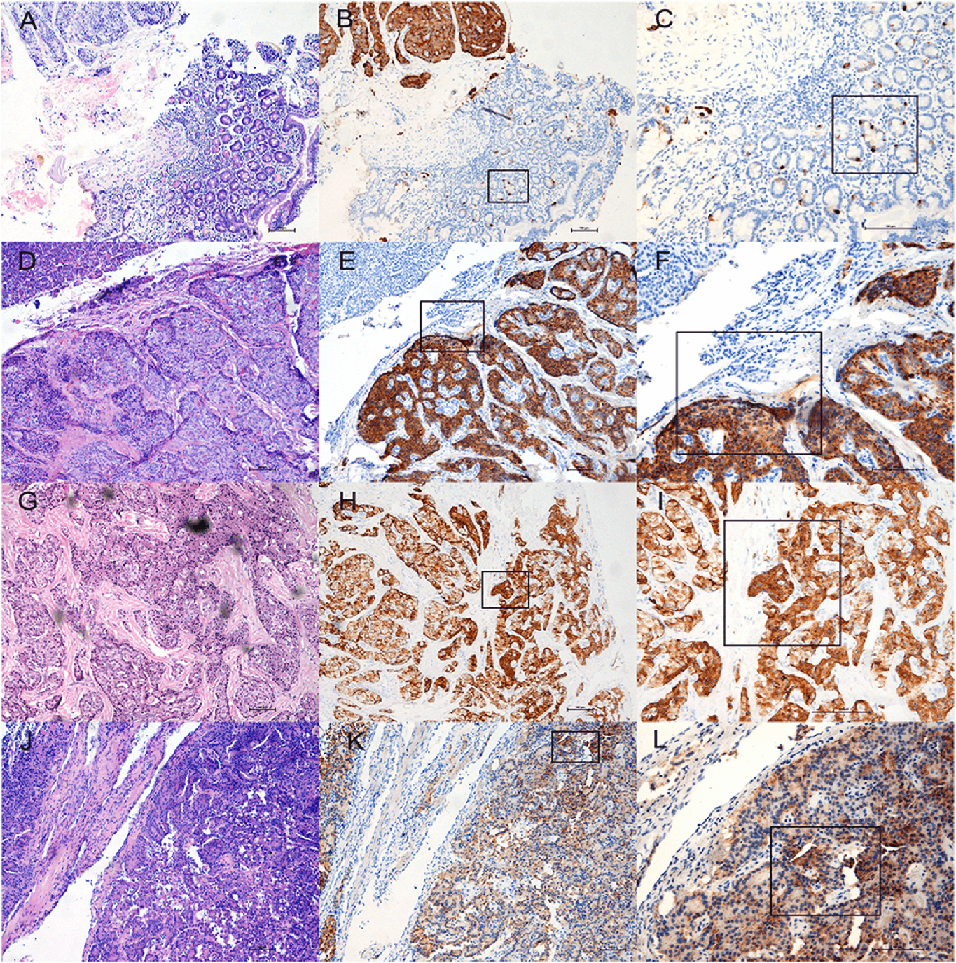Nowadays, in vitro diagnostic (IVD) antibodies has been increasingly popular to be used in immunodiagnostic kits for the diagnosis of diseases, for monitoring drug therapies, or determining prognosis. As a world-leading antibody service provider, Creative Biolabs has launched a series of IVD antibody development services targeting the chromogranin A (CgA) of neuroendocrine tumor.
Neuroendocrine Tumor and Treatment
Neuroendocrine cells grow all around the body including organs of lungs, stomach, intestines, and gastrointestinal tract. Such cells perform specific functions, for instance, regulating air and blood flow through the lungs as well as controlling the speed of food moves in the gastrointestinal tract. A neuroendocrine tumor (NET) is a mass originating from the hormone-producing cells of the neuroendocrine system, which consists of hormone-producing endocrine cells and nerve cells. There are many different types of neuroendocrine tumors (NETs), three of which are most often investigated named pheochromocytoma, neuroendocrine carcinoma, and Merkel cell cancer.
The treatments for NET require a coordinated multidisciplinary consideration. The management of localized NET principally contains surgical resection followed by clinical surveillance. When it comes to the patients with the unresectable or metastatic disease may prone to choose a combination of surgical resection, liver-directed therapy and systemic therapy with the goal of alleviating symptoms of peptide release and controlling tumor growth.
CgA and NET
CgA (Chromogranin A) is an acidic glycoprotein with 46-kDa that is presented in the secretory dense-core granules of neuroendocrine tissues and constitutes one of the most abundant components in secretory granules. It is composed of 439 amino acids and encoded by the gene mapped to chromosome 14. The name of chromogranin A can derive from a spot of primary detection that is adrenal medulla chromaffin vesicles containing catecholamines. It belongs to a member of the granin family comprising chromogranin B, chromogranin C, and secretogranin II and was also the first identified representative of granins. CgA exists within all types of neurons and normal neuroendocrine cells and is widely expressed in NET cells. Its expression relates to the amount of secretory vesicles in neuroendocrine cells. In addition, CgA contains many cleavage sites that undergo a tissue-specific proteolytic process, which leads to the production of various biologically active peptides such as vasostatin I, vasostatin II, pancreastatin, parastatin, catestatin, serpinin, and so on.
High CgA levels have been proved in the serum or plasma of patients with different kinds of endocrine tumors including pheochromocytoma, enterochromaffin cell tumors, and medullary thyroid carcinoma. The expression often remains increased in cases of less well-differentiated tumors of neuroendocrine origin that secret no hormones. That is to say, NETs are frequently associated with increased concentrations of CgA. In particular, it becomes the main source of circulating CgA in the blood when a tumor develops in an endocrine tissue. Cumulative evidence suggests that circulating CgA is the most valuable marker of NETs with high specificity and sensitivity. CgA is physiologically released by exocytosis and can be either detected from the serum or measured in a tissue sample by immunohistochemistry (ICH). There are other routinely analytical techniques like radioimmunoassay (RIA), enzyme-linked immunosorbent assay (ELISA), chemiluminescent immunoassay (CLIA) used for the measurement of CgA concentration in the serum or plasma. Therefore, CgA can be selected, in conjunction with other testing modalities, as a diagnostic tool, and might have some prognostic significance.
IVD for CgA Marker
Neuroendocrine cells and their endocrine glands can give rise to varieties of tumors, both benign and malignant, involving carcinoid tumors that are slow-growing noncancerous or cancerous masses mainly form in the gastrointestinal tract and in the lungs. The CgA test can be used to help detect and diagnose NETs, especially carcinoid tumors.
 Fig.1 Representative examples of CgA expression in pancreatic NETs and their paired tissues.1
Fig.1 Representative examples of CgA expression in pancreatic NETs and their paired tissues.1
IVD Antibody Development Service for CgA Marker
With extensive experience and advanced technologies, Creative Biolabs has been recognized as an expert in the field of IVD antibody development. Our scientific team is able to provide polyclonal, monoclonal, and recombinant antibody development services for diagnostic use. Besides, we help develop high-quality IVD immunoassays of different formats, giving expert support in feasibility analysis, protocol establishment, assay design, validation, and kit production.
If you are interested in our service, please feel free to contact us for more information and a detailed quote.
Reference
- Qiao, X.W., (2014). “Chromogranin A is a reliable serum diagnostic biomarker for pancreatic neuroendocrine tumors but not for insulinomas.” BMC Endocr Disord, 14, 64. Distributed under Open Access license CC BY 4.0, without modification.
For Research Use Only.

